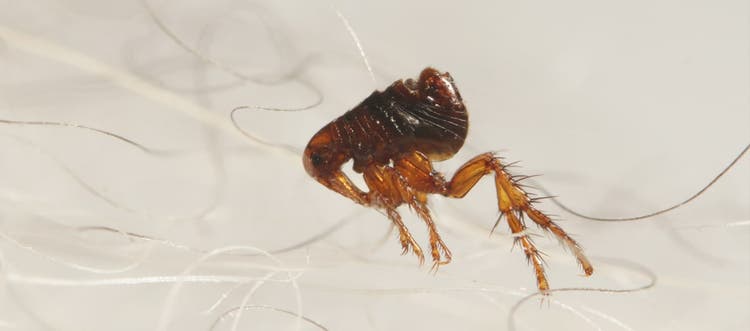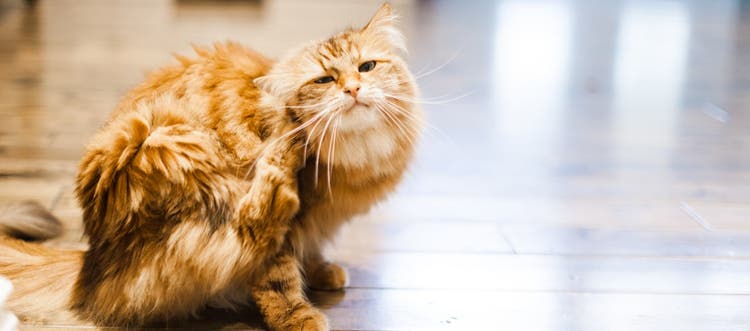How fleas infest your pet or home.
Fleas. The word alone probably makes you itch — and for good reason. These irritating parasites can mean major trouble for you and your pet. Find out where your dog or cat could get fleas and what you can do to avoid an infestation.
Where Can My Dog or Cat Get Fleas?
Many fleas begin as eggs in shady, protected areas outdoors. But outdoor pets aren’t the only ones who can fall victim to fleas; indoor pets are at risk, too. Here are three ways pets come in contact with fleas.
- Infested wildlife: You’ve seen them before, probably at night: animals like opossums, skunks, raccoons, foxes and stray cats slinking around outside your house. These creatures are often infested with fleas that drop flea eggs in your yard — which means when your pet goes outside to play or relieve themselves, they’re at risk of picking up fleas.
- Infested common areas: Your pet may pick up fleas from places like rest areas, dog day cares and dog parks, where an infested pet may have roamed, laid down or played (and dropped flea eggs).
- Houseguests: Friends living in flea-infested homes may unknowingly bring along their parasite problem when they come over for pet play dates or family visits. This is why indoor dogs and cats are also at risk; fleas could be carried in on visiting human or other four-legged houseguests.
What Times of the Year Can My Dog or Cat Get Fleas?
Unfortunately, fleas are always in season. They tend to be more active during the warmer months, but as long as they have a warm host to live on — like your dog or cat — fleas can survive colder winter temperatures as well.
However, because they thrive in damp, humid weather (70–85 degrees F is their ideal temperature), it makes perfect sense that many flea infestations originate outside your home in the warmer months.
How to Prevent a Flea Infestation
Prevention is a crucial (and easy) way to avoid a flea infestation altogether, so don’t wait until you have a flea infestation before taking action. Even if you don’t currently see fleas on your pet or in your home, these parasites could still be present. You won’t necessarily see them because most fleas lay dormant in the form of eggs, larvae and pupae before they hatch and jump on your pet.
While it’s easy for fleas to infest your pet and your home, it’s difficult to get rid of them. So whether you have an indoor cat or an outside dog, prevention is the most important part of your routine. Luckily, owners have several options for preventing fleas, including collars, drops and pills. Choose a product that works best for your pet and lifestyle.

Seresto® Flea & Tick Collar for Dogs
An easy-to-use, odorless, non-greasy collar that kills and repels fleas and ticks for 8 continuous months.

Advantage® XD (spinetoram)
Kills fleas for two months with one dose, outlasting the typical six-week flea life cycle — and the monthly competition.

K9 Advantix® II
A convenient, monthly topical application that kills and repels fleas, ticks and mosquitoes through contact, so they don't have to bite your dog to die. Do not use on cats.

Seresto® Flea & Tick Collar for Cats
An easy-to-use, odorless, non-greasy collar that kills and repels fleas and ticks for 8 continuous months.


